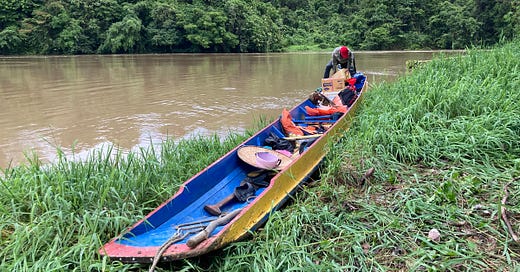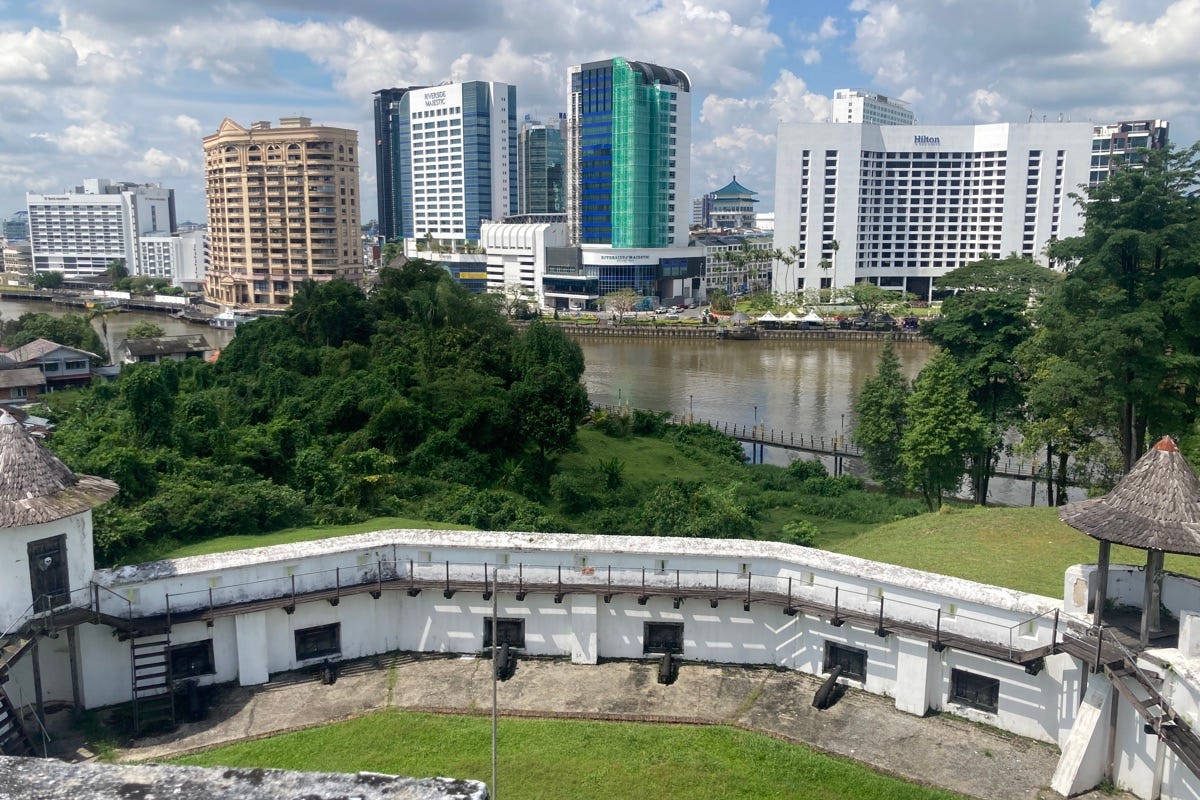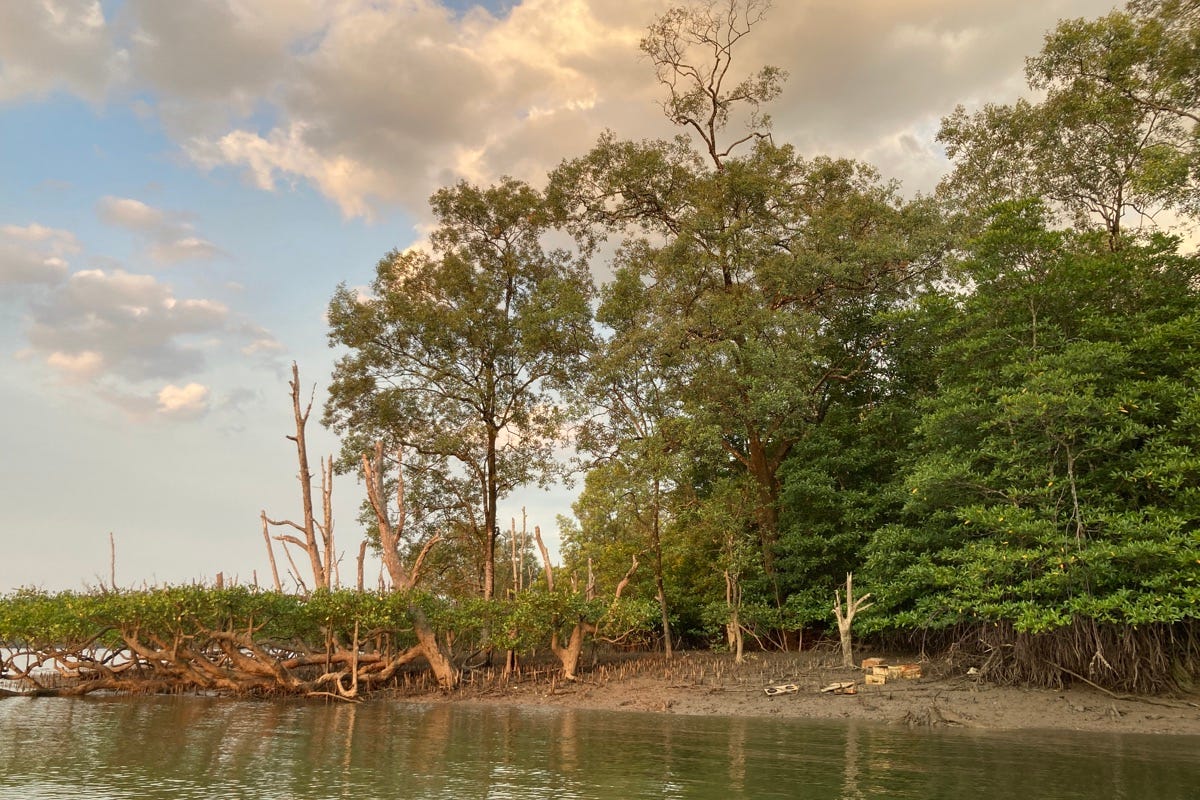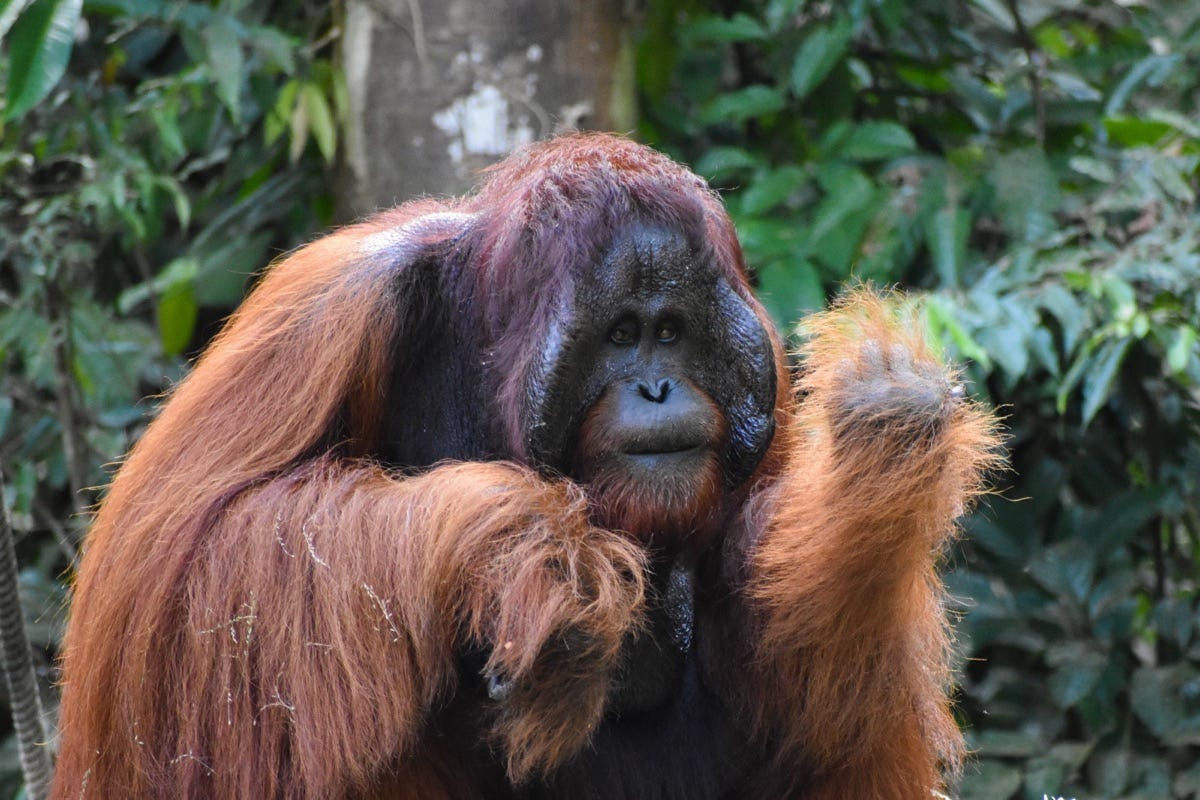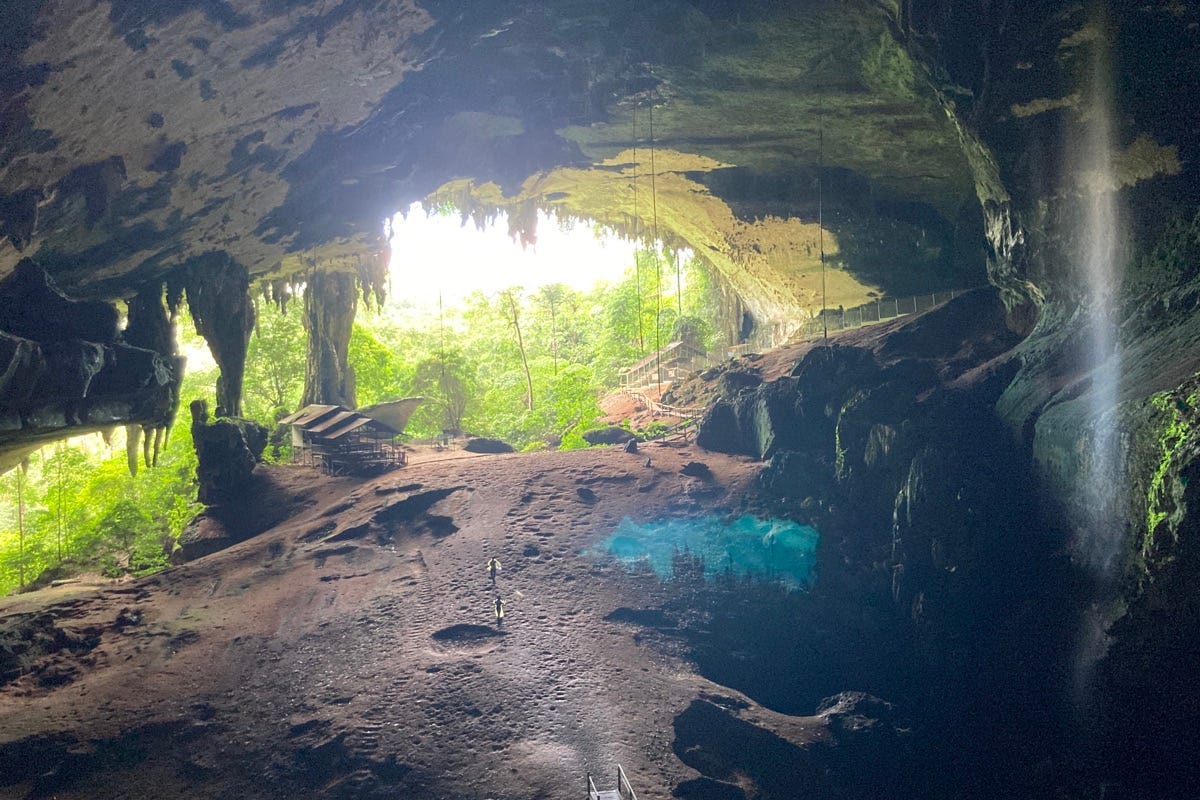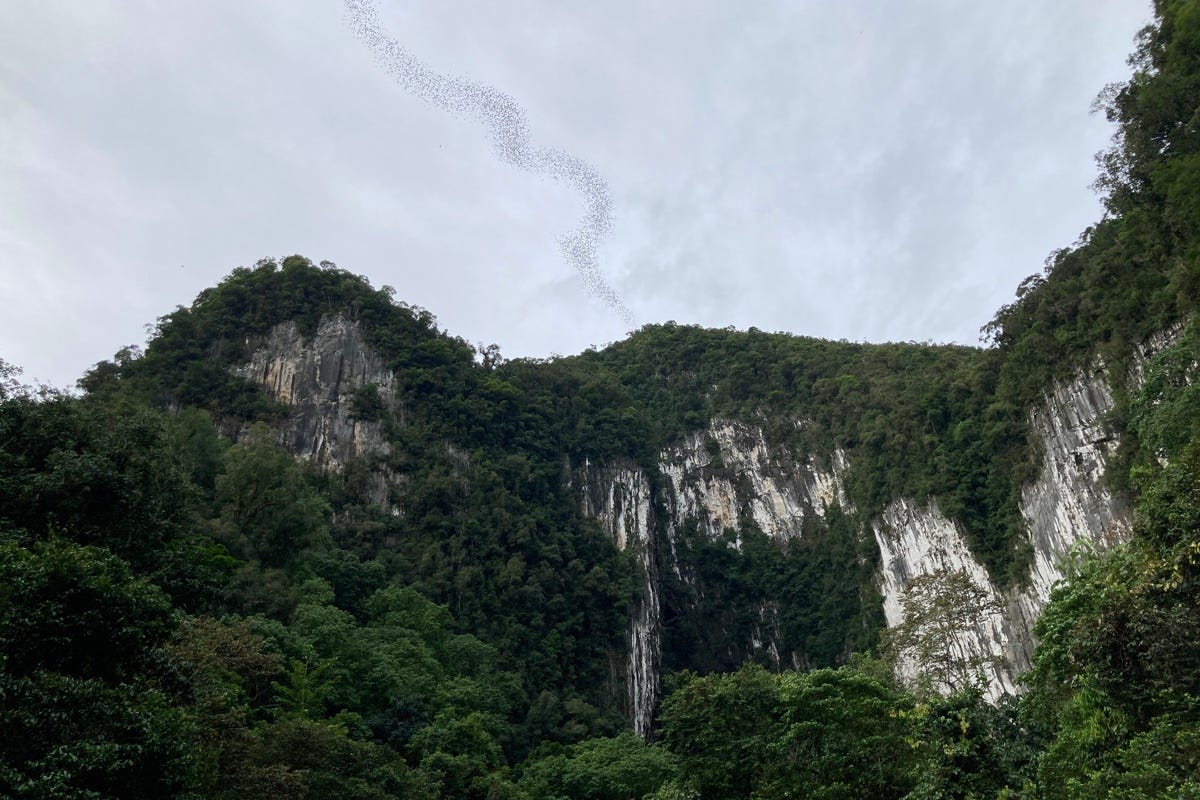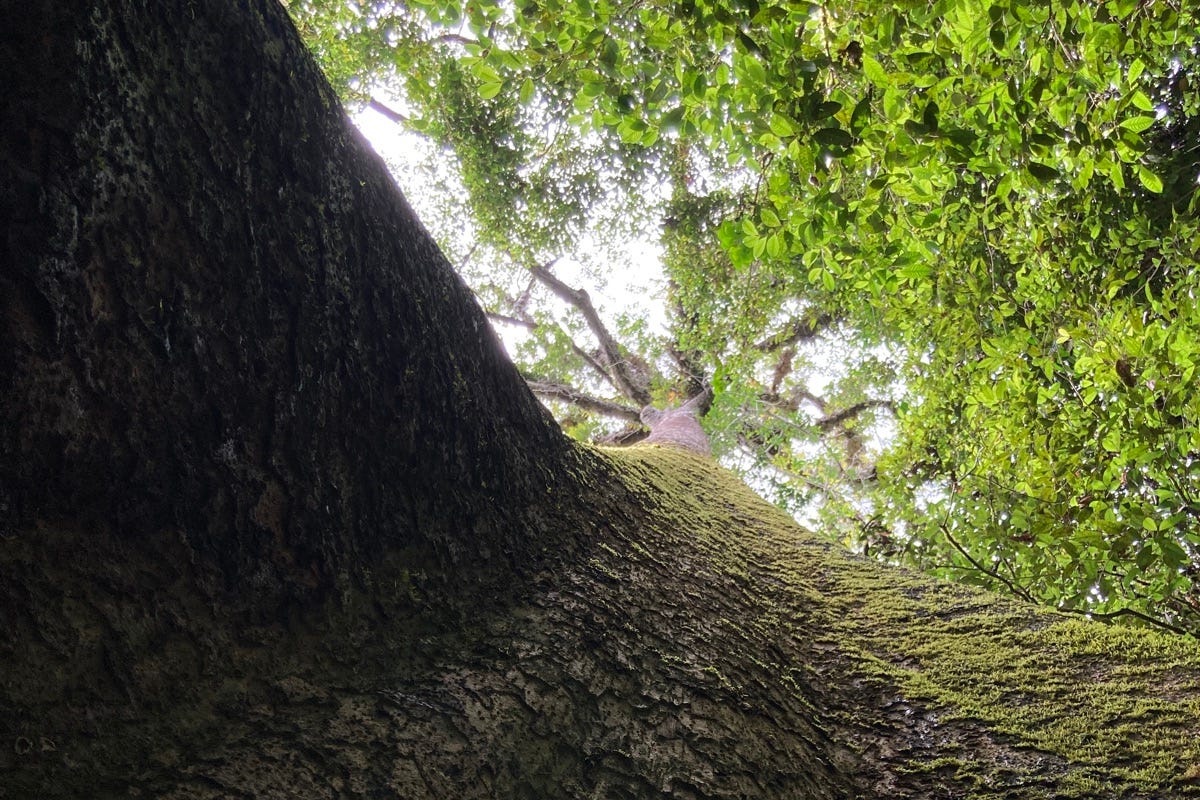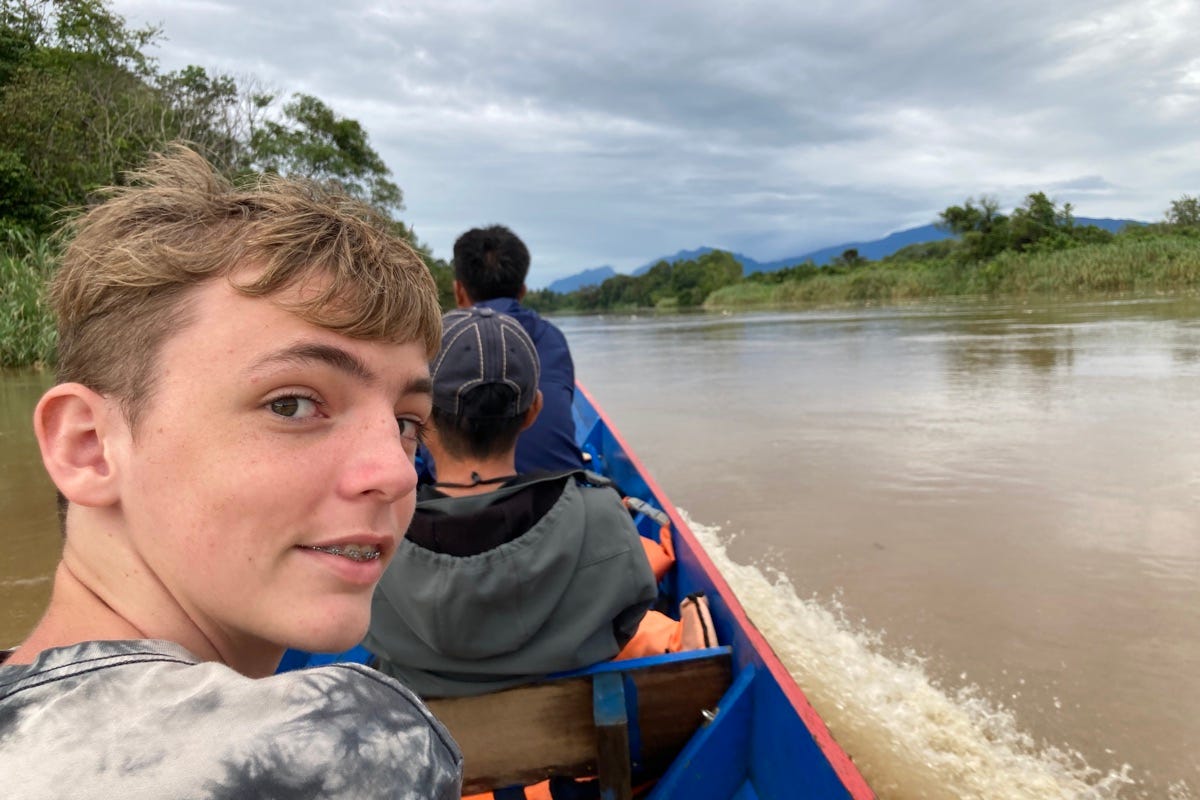A quick word of introduction. My name is Stuart McDonald and this is Couchfish—the perfect tub of ice-cream for the traveller stranded on the couch. The newsletter has both a paid edition which traces a fantasy itinerary through Southeast Asia, and a free one that covers, well, everything else. You’re reading the latter here—with a Kuching food guide at the end for paid subscribers, but if you’d like to read the former, you can upgrade your subscription via the button below. Thanks!
PS: If you are on the free Couchfish list, when you receive this, the podcast link above reads “This episode is for paid subscribers.” This isn’t correct, or, is at least very misleading, but I can’t figure out how to change it. If you click through to the web version of this newsletter, then you should be able to listen to the free version of the podcast (which has everything except for the food bit at the end). My apologies for the confusion.
To my mind a sign of a good trip is realising you’ve already arrived at the final day of it, and our time in Sarawak has been such a trip. With that in mind, here are some observations on what we got right, what we got wrong, and where there’s some room for improvement. Please bear in mind the following is based off of a two-week trip to a very limited range of destinations within Sarawak. There’ll be a few follow-up posts in the coming weeks that will be adding some more detail and thoughts to some aspects of our time there.
And, for paying Couchfish subscribers, at the end of this post, there’s about 1,500 bonus words on some of our favourite spots to stuff face in Kuching.
The basics
We arrived in Kuching via Kuala Lumpur on the 23rd of June and started what turned out to be a very long trip home on the 7th of July via Singapore, so all up two weeks and a day.
Our itinerary had us starting in Kuching for eight nights, Miri for two nights, Mulu National Park for three, then back to Miri for a night and then out. This schedule, looking back, wasn’t ideal, as in the least we should have shaved two nights off of Kuching and added Sibu to break up the trip to Miri. Lesson learned.
Kuching
Kuching is a great town—if you’ve travelled in Peninsular Malaysia, think of Georgetown and Ipoh, and consider the difference in “tourist vibe and volume” between the two, then apply that difference again from Ipoh to land at Kuching. To put it another way, Kuching has all the same good—the beautiful architecture, the terrific food, some excellent museums, a pleasant setting, friendly and ever-helpful people; and yet precious little of the bad—being throngs of tourists and the gentrification that often comes with them.
Kuching offers up both the old and the new. Photo: Stuart McDonald.
Aside from the above-mentioned aspects, Kuching also serves as a base for short tours out in all directions, be it to natural attractions or “cultural experiences.” We visited some of these on tours and others under our own steam, and yet still left much on the table—Kuching has a lot to do and see, but even if we’d taken a more military expedition type of approach, we’d still have needed at least three nights to take in the top shelf items.
One of the most popular tours is to Bako National Park, but the accommodation was closed—a blessing in disguise perhaps, as, of all the national parks we visited in Sarawak, it was easily the most underwhelming. For foreign tourists, it is the most popular national park in Sarawak, attracting over 40,000 foreign visitors in 2019—over double the next highly-ranked. This has to be a product of its proximity to Kuching more than anything else, as the park infrastructure, as with most of the parks we visited was in a delapidated state. It’s main selling point, the chance to see wildlife, is curtailed by a less than ideal transport situation, one I assume implemented to encourage people to stay—but not so ideal when you can’t stay! More on this in a latter issue.
These trees are actually crawling with proboscis monkeys, but I don’t have a zoom lens sorry! Photo: Stuart McDonald.
We did two tours while in Kuching, a group wetlands tour, and then a full-day trip with a private guide to Semenggoh Wildlife Centre and Annah Rais Longhouse. These are but two of many tours available—Sarawak’s public transport isn’t what it could be, and once you start weighing up the cost of your time versus hiring a car for the day, they’re often the most time- and cost-efficient way to get stuff done.
The wetlands tour was something I would never have chosen to do—it was my son’s pick, but it turned out to be excellent—not perfect mind you, but certainly enjoyable. We saw plenty of wildlife—dolphins, crocodiles, proboscis monkeys, and a tonne of birdlife. The guide was solid, though I could have done without the propaganda spiel at the end of the tour.
For Semenggoh Wildlife Centre and Annah Rais Longhouse, we hired a private guide with a car for the day. The guide, Lucian, was excellent, and if you’re looking for a professional and extremely knowledgable Kuching guide, I’d recommend him without hesitation—you can contact him on Whatsapp at +60198187938. The trip to Annah Rais was interesting, and I’d say worthwhile, more because it is a realistic look at day to day life, with all the flashes of modern-day living, rather than a contrived “authentic” traditional affair. It is a popular tourist site, and has been for decades, and while some visit independently, I strongly recommend using a guide—if for no other reason but to explain what you are seeing.
My son though, does have a zoom lens. At Semenggoh Wildlife Centre. Photo: Will McDonald.
Semenggoh, I have significant reservations over. It is ostensibly a wildlife reserve, but it is also the single most popular “natural” tourist site in Sarawak, attracting almost 50,000 foreign tourists in 2019. On the day we visited, there were at least 100 people there for the feeding time, and to my (non-expert) mind, there were too many people, they were too close to the orangutans, and the guides were too invested in coaxing the animals out of the woods for a photo shoot. A visit is more akin to visiting an open zoo than anything putting animal welfare at the forefront.
It was also from Kuching that we began our cave odyssey, with a half day trip by scooter out to Fairy Cave. At the time, the cave blew us away, but a half dozen grander caves later, my son identified it as the “most boring,” something I’d be inclined to agree with. However, if you’re not going to either Niah or Mulu national parks, then it is worth the trip.
Sarawak is big
It was from Kuching, that we made the one major mistake of the trip, one of me not following my own advice. We’d originally planned on getting the boat from Kuching to Sibu and spending a couple of days there before pushing on to Miri, but the boat no longer runs, and as we spent so long in Kuching, our timeline tightened. The result, a 17-hour overnight bus from Kuching to Mulu. This was not fun, and while I’ve had far worse bus rides in my life, 17 hours is a long time to spend in anything. We should have shaved two days off Kuching, and broken the trip at Sibu regardless of there being a boat or not, and if we’d had another week, I’d have broken the trip again at Bintulu.
Most travellers fly, either Kuching to Miri or Kuching to Mulu, but, as I’ve written before, I’m no fan of domestic flights when ground transport exists. I’d say doing it overland is fine, but you need to allow enough time to break the trip at Sibu and/or Bintulu.
Miri
In many ways, Miri lacks the appeal of Kuching, though it also has excellent food. It was badly damaged by Allied bombing in World War 2 and what grew back is not particularly attractive to the eye. It also has a significant sketchy side—choose your massage joint with care (Lemongrass Family Reflexology & Spa on Jalan Permaisuri is a safe bet should you need your body put back together after a 17-hour bus trip).
The grand cavern at Niah is something else. Note the waterfall at right and the two people at centre for scale! Photo: Stuart McDonald.
From Miri, we hired a car and driver for the 100 km trip south to Niah National Park. One of the most important archeological sites in Southeast Asia, the digs are conveniently located within an absolutely enormous cave. When I say enormous, I mean Enormous. As with Bako, the state of the park’s infrastructure is a mess—it is embarrassing. The archeological sites are protected by wire fences that wouldn’t look out of place around a chicken coop.
Authorities are hoping for UNESCO heritage listing in the coming year or so, and while that will come with a bucket of dosh, for now the elevated walking trails are flat out dangerous. As we’ve written on Travelfish, Malaysian parks and UNESCO haven’t always worked out for the better. In the meantime, watch your step and please try not to break a leg. All this aside, is Niah worth a visit? Yes.
Mulu National Park
Almost all visitors fly from Miri (or Kuching) to Mulu National Park, but I was determined not to—I wanted to go by boat. I knew it was possible in the past, and it looked like a good trip. There’s a whole other post on this trip coming, so I’ll be brief here, well briefer than a five hour 4WD run and a two-hour boat trip, but for me it was a highlight of our time in Sarawak.
A rest-stop half way into the boat trip from Miri to Mulu. Photo: Stuart McDonald.
We engaged Veno, an experienced guide from Mulu, to sort out the trip and I was really impressed with his knowledge, and he really helped to broaden my understanding around some of the issues at play there. He is an extremely experienced guide and if you’re looking for a private guide for the park, he’s a solid choice. You can contact him by Whatsapp on +60128700275.
With Mulu, having spent an entire day getting there, we had two full days before returning to Miri for our flights back to Bali. This was enough time to see what the park refers to as its “show caves,” namely Deer and Langs caves the first afternoon and Clearwater and Wind caves the second morning. In between, we did the canopy walk and Treetop Tower (a treetop hide) and some other aimless wandering in the park. We booked a night walk, but skipped it when the weather went sideways. Overall, this was enough time, but an extra full day would have been welcome. We had no plans to do any of the one- or two- night treks such as the Pinnacles Walk, nor the adventure caving, but obviously if you wanted to do any of these, more time would be required.
Did someone call Batman two million times? Photo: Stuart McDonald.
In comparison to the other national parks we visited, Mulu is quite well run. The trails are fairly safe, with clear evidence of maintenance and care, but accidents do happen. The guides were good, if a bit perfunctory at times, but the group sizes on the other hand, with a maximum of twenty pax per guide, are too big. When we visited Deer and Langs caves there was something like 80 to 100 people in the cave complex—and even when taking their enormous size into consideration—it was simply too many people. Again, there’s a more detailed post on this coming.
The big question with Mulu is, is it worth the diversion? I’d say yes, but I’d argue if you have the time—and the money—doing at least one way there by boat and 4WD is time and money very well spent.
How long in Sarawak?
If I had to boil Sarawak down to a single aspect, it would be time and money. It is a very big moderately-sized region. It does take longer than you might expect to get around, and it will definitely cost you more than you expect—if you’re acclimatised to a more typical Southeast Asia budget.
Now that is a tree. Mulu National Park. Photo: Stuart McDonald.
If you’re planning on visiting for just a week, limit yourself to Kuching and surrounds. If you’ve got two, then add in Mulu, or explore further afield around Kuching, particularly into the hinterland and to the west.
Regardless of how long much time you have pencilled in, be it five days or five weeks, I’d suggest doubling your planned time there—it is that good.
Who is Sarawak great for?
If you’re a nature lover, then, as with Sabah, Sarawak is the business. While the national parks are a bit rough and ready, the nature is magnificent. It is as simple as that.
Sarawak is a great destination with teenagers on board. Photo: Stuart McDonald.
I did this trip with my teenage (14 years old) son Will, and was struck by what an easy destination it was to travel with him in. There’s enough of a mix of museums in Kuching to keep teenage kids interested, and Kuching is a safe and easy to walk in city. The prevalence of guided tours, while a pain for a solo traveller’s budget, are a boon for families. Once you’re out in the national parks, with caves and waterfalls and wildlife and so on, its the perfect realm to get teenagers off their devices! I met quite a few travelling families, often with very young kids, and they had no complaints.
For paid Couchfish subscribers, particularly those with empty stomachs, please read on for some quick thoughts on eating in Kuching.

